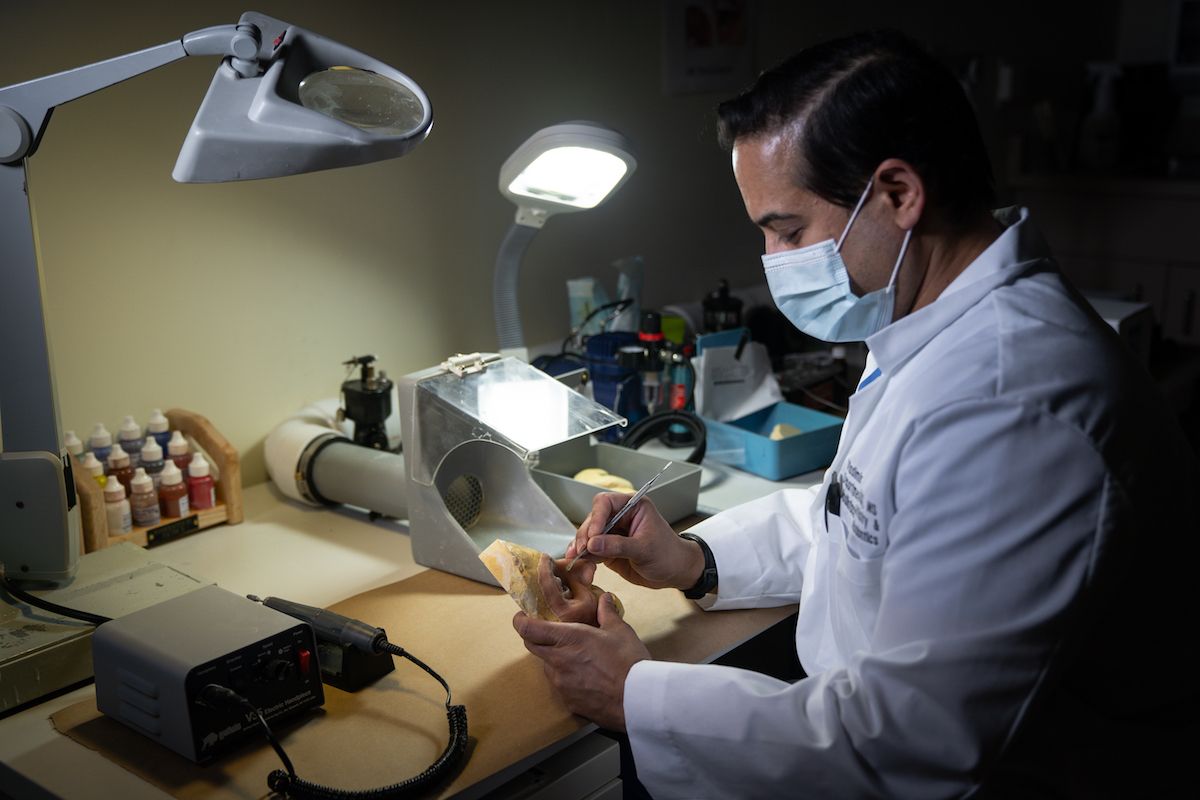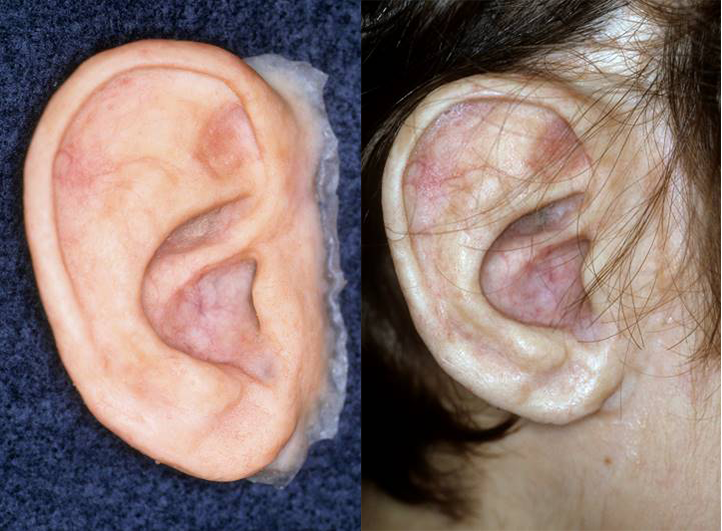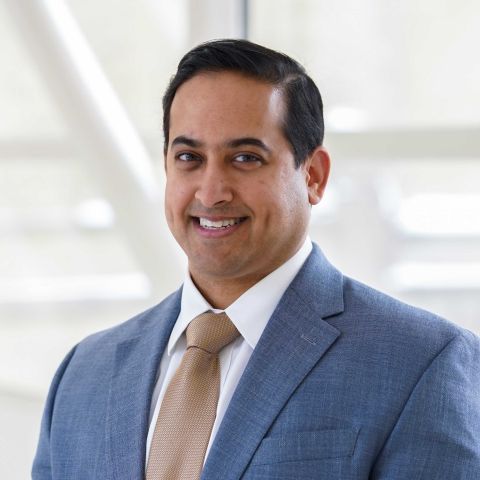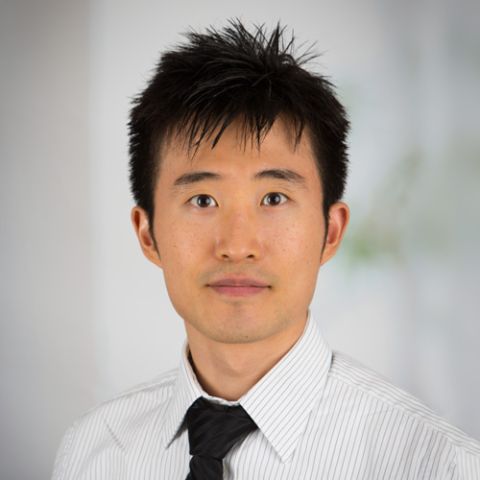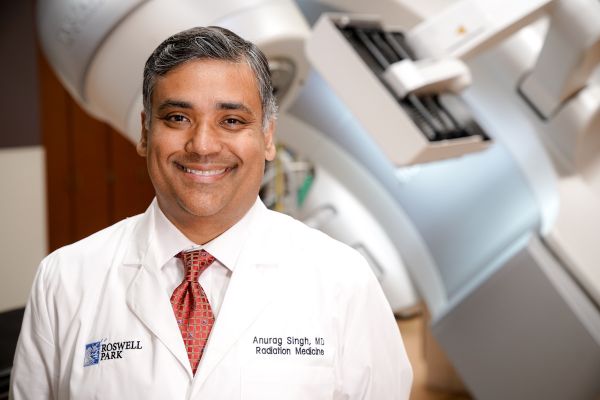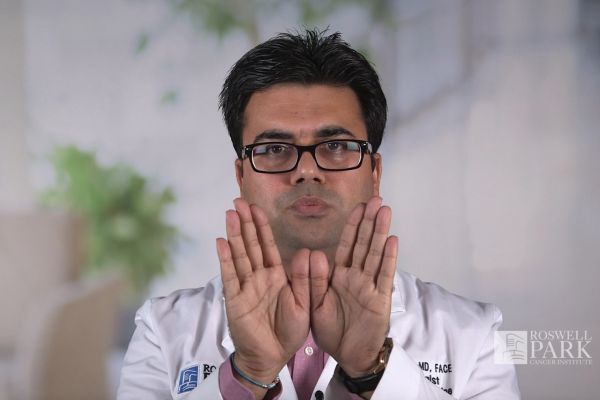For some cancer patients, surgical treatment can result in the loss of an ear, a nose, an eye or other body parts, causing significant changes in appearance and often leading to severe emotional distress. Removal of some structures, such as the hard palate (roof of the mouth), also can make it difficult or impossible for a patient to speak, chew or swallow.
That’s where Vladimir Frias, DDS, MS, comes in. As Director of Maxillofacial Prosthetics at Roswell Park, he creates prostheses — artificial substitutes for the missing parts — to restore the patient’s pre-surgery appearance and recover any functions that may have been lost. Maxillofacial prosthetics refers to the replacement of any part of the jaws. Craniofacial prosthetics refers to the replacement of other parts of the head and neck, including eyes, ears and noses.
By the time Dr. Frias meets with patients, usually they have already spoken with their head and neck surgeon, “so when I see them, they have an idea of what the removal will involve, but not what the replacement will involve.”
To make sure the prosthesis will match the patient’s pre-surgery appearance as closely as possible, before treatment begins, Dr. Frias takes photos of the patient and uses a special type of silicone to make impressions of the area that will be affected.
Greater precision with 3D imaging
But a new method is being introduced at Roswell Park. “A lot of work that used to be handmade is now done digitally,” he says. “In addition to 3D photography and laser scanning, Roswell Park’s Diagnostic Radiology Department can now 3D-print patients’ anatomical models based on data from CT scans instead of traditional physical impressions.”
Dr. Frias is collaborating with diagnostic radiologist Larson Hsu, MD, on a new method of creating prostheses. It begins before surgery when the patient undergoes a CT scan that is used to create a 3D model of the patient’s facial structures. Using the model, Dr. Hsu prints a 3D wearable prosthesis made of material that is designed to be in close contact with the skin without causing allergic reactions. The prosthesis can be ready for use even before surgery. “Using laser scanning or 3D imaging is more precise,” says Dr. Frias. “It saves treatment time and is much more comfortable for the patient.”
How is the prosthesis held in place? For some patients, magnets or clips embedded in the prosthesis will connect to titanium implants that are placed in the bone during surgery. In others, the prosthesis will be screwed directly to the implants with titanium screws.
Implants are possible only when the bone is healthy and strong and has not been weakened by radiation to the head and neck. To make this an option for as many patients as possible, Dr. Frias works closely with Roswell Park’s radiation oncologists to ensure that the bones are protected — for example, by using radiation shields that are custom-made for the patient’s face.
If the patient is a candidate for implants, Dr. Frias joins the other surgeons in the operating room and installs the screws as soon as the surgery is finished. In other cases, implant surgery may be delayed until the patient has healed from the surgery to remove the cancer. For jaw removal, Dr. Frias can wire or screw a surgical prosthesis into place until healing is complete.
Most prostheses have a titanium or acrylic base with a silicone surface that can be matched to the patient’s own skin color so it looks highly realistic and blends in perfectly with the surrounding natural skin. “We do everything, start to finish, in our lab,” says Dr. Frias. “It’s a lot of fun to do."
Dr. Frias says many of his patients are referred from other hospitals across New York State, “either because they haven’t been able to get the treatment they need or they’re unhappy with treatment they received elsewhere.” He notes that Roswell Park is home to one of very few maxillofacial rehabilitation centers in the state, where surgeons, radiation oncologists and maxillofacial prosthetics specialists work together on treatment planning.
Prostheses for other parts of the body
Although most of his work involves the head and neck, Dr. Frias also creates prostheses for other parts of the body. For example, for women undergoing breast reconstruction, he can create artificial breast or nipple prostheses that can be kept in place with adhesive for up to two weeks at a time.
Dr. Frias became interested in maxillofacial prosthetics after graduating from dental school, while he was completing a residency in prosthodontics, a specialty that focuses on helping patients who are missing teeth or parts of the jaw. “One of my professors invented some of the original techniques for the use of surgical implants for artificial noses and eyes,” he says. “I thought, That’s a great way to help people.”
Never miss another Cancer Talk blog!
Sign up to receive our monthly Cancer Talk e-newsletter.
Sign up!Dr. Frias went on to complete fellowships in maxillofacial prosthetics and implant surgery and has been honored with the Barron Award, given by the American Academy of Maxillofacial Prosthetics for excellence in the field.
Experience has taught him that he made the right choice. Often when patients first see themselves with the new prosthesis in place, “they burst into tears,” he says. “But some of the best reactions come from the rest of their family members, because we’ve made the patient look completely natural, and in some cases they haven’t seen their loved one look like that in years.
“It’s the most rewarding feeling I’ve ever had.”

